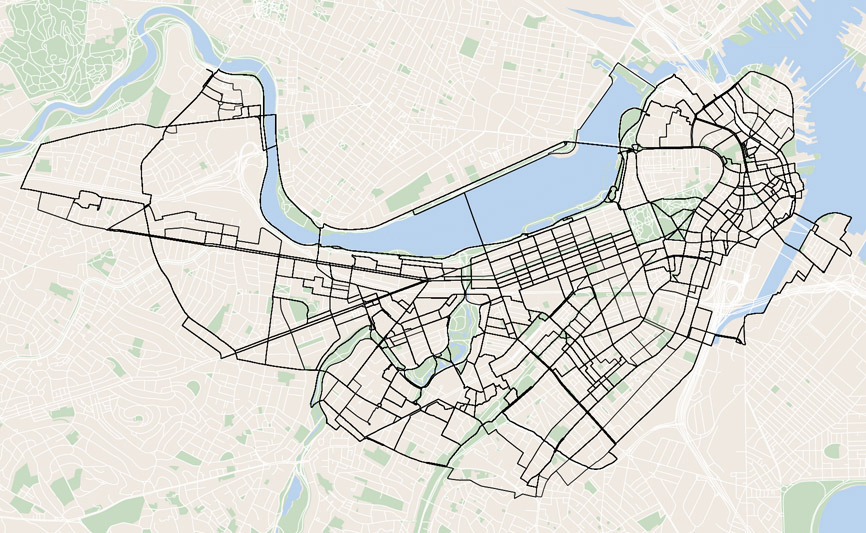MBTA to install more bike racks with $4.8 million national stimulus funds
Written by Samantha Tatro
The Massachusetts Bay Transportation Authority is gearing up to add more than 600 bicycle parking-spots to T stations in and around Boston by the end of the summer.
The MBTA recently received $4.8 million of national stimulus funding from the American Recovery and Reinvestment Act to expand and improve its bicycle parking facilities, said MBTA spokeswoman Lydia Rivera in an email.
The T has already begun construction on three bike cages, or Pedal and Parks, slated to be finished by the spring, she said. It plans to complete three more by the end of the summer.
“The benefit of a cage program is significant. Providing sufficient bike parking will provide customers with an alternative to driving their car to the station,” Rivera said. “The option to cycle will help to reduce greenhouse gas and other pollution, and there will be health benefits to the rider. The MBTA is one of the first transit agencies in the U.S. to construct this type of bike cage.”
Each bike cage will hold about 100 bikes and be equipped with chain-link fence enclosures, security gates, canopies, lighting, multiple security cameras and emergency call boxes. The MBTA has begun construction on Pedal and Parks at the South Station, Oak Grove and Braintree stations, and will soon begin work at the Malden, Davis and Ashmont stations, she said.
“As the T’s first bike cages at Alewife, Forest Hills and South Stations continue to get more and more use, the MBTA is ready to build additional bike cages throughout the T system,” Rivera said.
“Increasingly popular among bicyclists looking to keep their bikes in a secured facility, the camera-monitored bike cages can only be accessed with special Bike CharlieCards.”
By the spring of 2013, Rivera said, the MBTA plans to build six more bike cages, bringing the total number of Pedal and Parks to 12.
In addition, the MBTA will construct 50 covered bike racks, 15 of which opened last year. The rest will open throughout the coming spring and summer, she said.
Many city cyclists said that they would use the planned facilitates.
Access to bike cages “would make me more likely to take my bike out in the rain,” said Boston University College of Communication junior Conor Sullivan. “On rainy or snowy days I would definitely love to park my bike in a covered shed. Precipitation messes up the gears and makes my butt wet when I hop back on.”
Andrew Weaver, a sophomore in COM, said although he rides his bike around campus and to places such as Cambridge or Allston, he usually keeps his bike in his room to avoid theft or damage.
“If I ever had to bike to the T, then I most likely would [park it in a bike cage] rather than leave it outside,” Weaver said, adding that despite the added security, he might not use the parking stations at
all.
Weaver said since he lives near a T stop, having a bike shed available would make little difference to him.
“The sheds seem like a great idea to have at some locations like North Station and South Station or maybe on the end of each line,” Weaver said. “I . . . can’t imagine many situations where I would use them.”
Weaver said often he does not have to ride the T at all.
Boston has more than 50 miles of bike lanes, according to a city press release.
“One of the great things about bicycling is that you don’t have to rely on or pay for public transportation,” he said. “I’m not in a situation where it would make sense for me to ride to a T stop and go somewhere on the train because 99 percent of the time I can get to my destination faster via bicycle.”
College of Arts and Sciences sophomore Alexandre Todorov also said he bikes to avoid using the T, but if he had to park his bike near a T stop, he “would be much happier knowing [his] bike is protected from the rain.”
Todorov said he would use the Pedal and Parks since his “bike would be safe and I would have greater freedom of movement through the city.”

